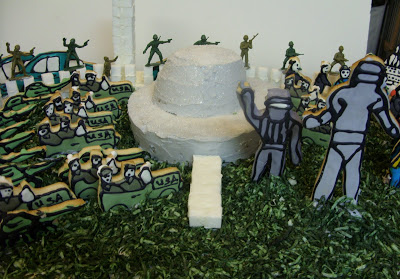
Have you seen the beautiful Australian oranges in the stores yet? Buy some-they make excellent marmalade. I'm really hoping the crop from South Africa will be as good as last year. When I tasted them for the first time it was like eating an orange in 1970-before they started hybridising all the taste out of oranges.
A word of warning about marmalade-it can quickly turn into a block of immobile gel that will bend any utensil you try to pry it out of the jar with. Keep in mind that you need to pull it off the heat before reaching the gelling point. It will continue to set after it sits several hours. If you do end up overcooking it, it can always be melted down and used as a glaze for meat, poultry or pastry. Better, I think, to keep an eye on it. With marmalade, softer is definitely better.
I use a jelly thermometer when making marmalade. At my elevation, 220 degrees F. is the ideal gelling point-but you need to check the elevation where you live and calculate the appropriate temperature. In the United States, you can call your local extension office and they will walk you through it, or you can find the information on line. I like to talk to the people at extension offices because they are such a great source of other information and once they find out you're preserving, will send you all sorts of helpful things in the post. I swear, if it grows, walks or gets cooked, they can answer your questions.
This recipe is not fancy-in fact it is downright basic. Though it is largely comprised of oranges, you do need some lemon which at the current price of...wait for it...$1.27 a piece (1) at my grocer, you might want to factor that into whether or not to make it at this time. Last winter I made a marmalade that was half lemon and half orange-I don't think I could afford that right now.
I should note that Danny (my citrus-hating son) ate it and asked for another piece of toast and probably would have just ate it from the spoon if I'd let him. The sugar ratio is 1:1 which i realise is quite a bit, but I don't recommend reducing it as it will effect the preservation and gelling of the marmalade.
It does take a while to make, and the peels and chopped fruit must be simmered five minutes and then let stand eighteen hours before cooking. The actual cooking time was about an hour, but you have to watch it to prevent scorching. Again, this is an activity best done when someone can watch the children as the second you turn your back, it will scorch. If you live alone (you lucky, lucky, bastards) you can cook up a batch at three in the morning.
The recipe is supposed to make 7 half pints. I ended up with nine. It wouldn't be a bad idea to prepare an extra jar and lid, or have one ready to keep the extra (unprocessed marmalade) in a jar in the fridge.
You Will Need:
2 cups thinly sliced orange peel (including pith-you need this for pectin) about 10 medium oranges
1 quart chopped orange pulp (about ten medium)
1 cup thinly sliced lemons-seeds removed
1 1/2 quarts water
Sugar
Combine everything except sugar in a large, heavy pot. Simmer five minutes. Cover, cool a bit and then set in the fridge for eighteen hours.
Cook rapidly until peel is tender (this goes pretty quickly). At this point you need to remove the fruit and liquid to measure. Add 1 cup sugar for each cup liquid. Return to pot and add 1 cup sugar at a time, stirring until dissolved. Bring to a boil and cook rapidly ALMOST to the gelling point. Keep stirring (and stand back, as this stuff burns if it hits you).
Remove from heat and ladle into hot jars. Run a spatula around the inside rim to remove air bubbles and wipe threads clean. process ten minutes in a boiling water canner. Cool five minutes in canner before carefully removing and placing on towels to cool. let stand 12-24 hours before checking for seals.





No comments:
Post a Comment